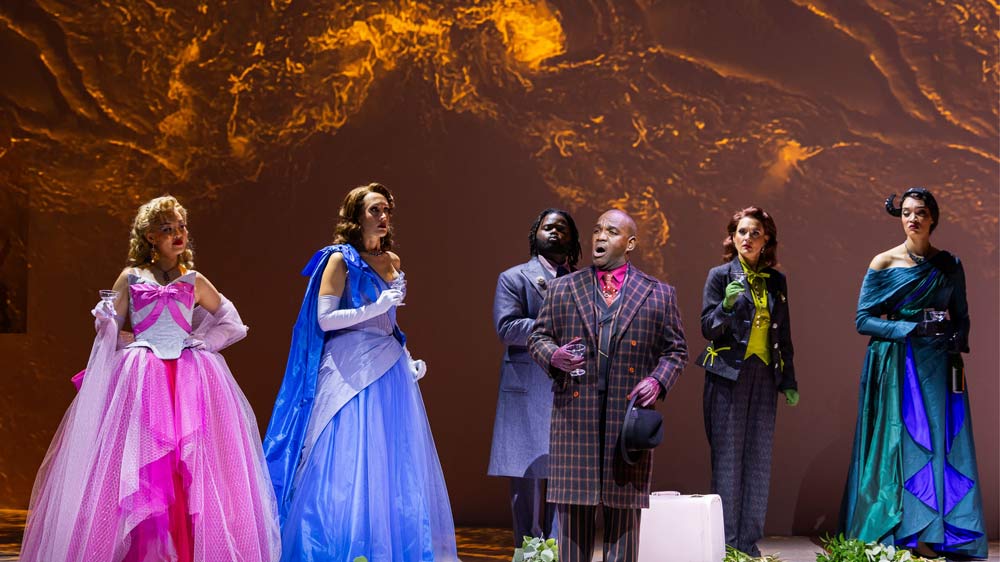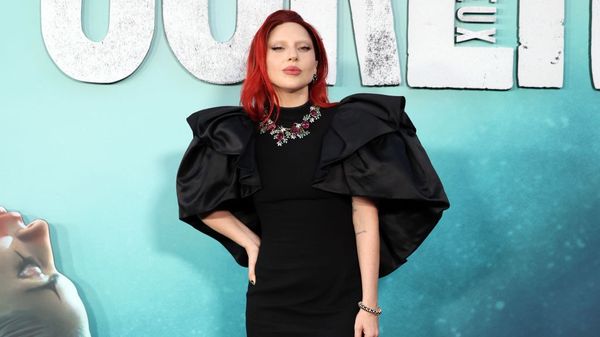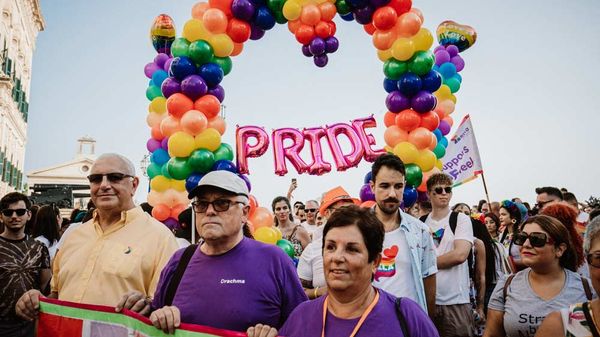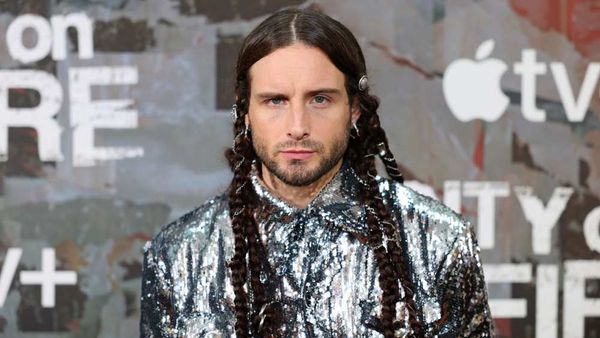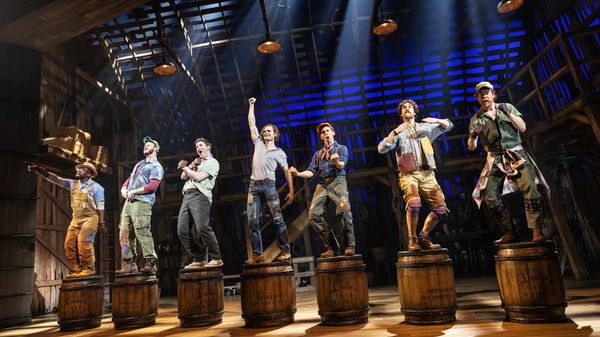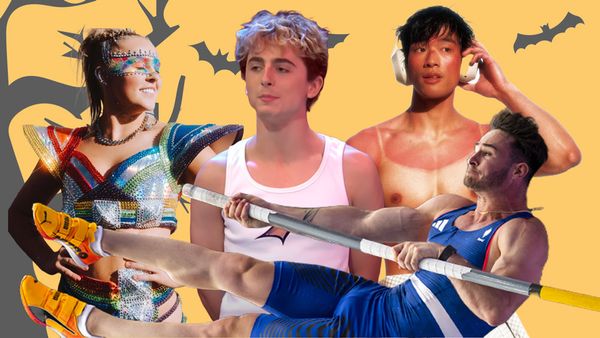May 4, 2008
Gay film fest still fab
Michael Wood READ TIME: 7 MIN.
The annual tradition of the Gay and Lesbian Film and Video Festival at the Museum of Fine Arts is always accompanied by the annual tradition of queer film buffs grousing about the Festival selections. And why shouldn't we grouse? The Festival is only 24 years old, but it's about due for a mid-life crisis. Long gone are the days when we'd eagerly embrace anything with queer content, no matter how badly it was made. Long gone, too, are the days when a gay film fest was our best bet to see any LGBT work at all. And yet, a number of the films in this year's festival have little to recommend themselves beyond the mere fact that they're gay, or that they trade on familiar and thus comforting stereotypes about queens and butch dykes; while the most interesting films are the ones that look beyond the queer community to examine our place within larger communities.
It's telling, I think, that the Festival doesn't have a mission statement. Its website merely promises "a dynamic, international roster of films exploring gay, lesbian, bisexual, and transgender experience and culture," a vague statement free of words like best or newest or challenging. The Festival does an admirable job of spotlighting international films and small documentaries, but the more gay goes mainstream, the harder it is for the Festival to wholly reflect the state of queer filmmaking. Nowadays the likes of Greg Arraki, Todd Haynes and Kimberly Peirce have outgrown gay film fests, while there's more competition for queer content from television, the straight to video market, and other local film festivals. (The Independent Film Festival of Boston, which just wrapped up this week, had three queer films that were more accomplished and more provocative than most of what you'll see in the Gay and Lesbian Fest.) In fact, many of this year's films are at the end of their film fest lifespans; some have been on the festival circuit for a year, others are already slated for video or theatrical release, and a couple are already available on video. Is this just a quirk of this year, or a sign that the day when a gay film fest is irrelevant isn't too far off?
Grousing aside, I found much to like in the 20 of the 24 films I was able to screen. The international films are the highlight this year, particularly a trio of narrative features that push the definition of queer film. Shamim Sarif's The World Unseen, set in a small community of Indian immigrants in South Africa in the 1950s, includes an intense, slow building romance between a traditional housewife and a trouser-wearing business owner. Lead actresses Lisa Ray and Sheetal Sheth offer strong performances and stronger chemistry, but the real meat of the film is its exploration of the boundaries between race, ethnicity, gender and tradition. The film's sweeping cinematography finds its opposite number in Ferzan Ozpetek's Saturn in Opposition, a film of interiors and domestic details. Humanistic but unsentimental, the film is a lovely and mature portrait of a circle of friends and how they support and care for each other through affairs, sickness and money troubles. Some gay characters get their share of screen time, but what really resonates here for queer viewers is the understanding that some families are made by choice, not birth. Choices about identity have yet to be made by the three young women in Celine Sciamma's Water Lilies, a delicate and slowly paced look at inchoate, budding sexuality. The images of water ballet - elegant and feminine above the water, furiously churning below - mirror the trio's quiet struggles with affection, attraction and jealousy.
Also of note is Russel Marleau's The Curiosity of Chance, an odd blend of Rushmore and the films of John Hughes. The film deftly and amusingly spins out a familiar tale of high school misfits contending with bullying athletes and parents who just don't get it. There's not much here that's new, but it's nice to see a story about a gay teen that begins with the hero out and confident. Cliches are the order of the day in Casper Andreas's very funny A Four Letter Word, in which a party boy who's offended at being called "a gay cliche" is determined to prove he can handle a relationship - even though he's picked a terrible boyfriend. The film manages a fun mix of embracing and mocking stereotypes about gay men. The cliches sometimes overshadow the comedy in Raul Marchand's Manuela Y Manuel, a movie about a drag queen who has to pretend to be his best gal pal's fiance. Some of the farcical situations feel forced and the movie's tone veers from pleasingly bubbly to annoyingly frenetic, but there are plenty of laughs on the way. Michelle Ehlan's Butch Jamie could stand to borrow some of Manuela's energy. The film has a fantastic premise - a lesbo spin on Tootsie, with Ehlan's butch actress getting cast as a man and falling for a woman on the set - but its muted tone prevents this comedy from soaring. Understatement is also on display in Cardona and Colbert's Finn's Girl, a quiet and satisfying drama about a woman trying to balance work, her young daughter, and a new romance. Intriguingly, the film casually tosses out a family secret towards the end that raises the stakes.
I really wanted to like Amber Sharp's Don't Go and Kirk Shannon-Butts's Blueprint. Both are admirably ambitious, but both are hampered by their low budgets. Don't Go, with its overlapping storylines of friends and neighbors in a multicultural neighborhood, feels like the pilot for a TV show. Unfortunately, only community access would greenlight this well meaning mess of repetitive writing, uneven acting, and slack editing. Even indie queen Guinevere Turner comes out looking bad. Blueprint puts a gay, African-American spin on Before Sunset with its story of two strangers who spend the day together. The film's humble visuals match its casual tone, and Shannon-Butts displays a great sense of pace, but the script needed more development. With the duo's mutual attraction not only unspoken but unseen, it's hard to believe the pair would spend more than ten minutes together, let alone go through an elaborate day-long courtship. Koji Kawano's Love My Life looks pretty good in comparison, offering up a cute lesbian romance but not much else; it's like a a soap opera without a plot, J-drama without the drama.
On the documentary front, the American films start to catch up with international films, at least in terms of polish. Gene Graham's The Godfather of Disco is a meticulously crafted look at Mel Cheren, the founder of West End records. Cheren was a pivotal figure in dance music in the 70s, and the movie nostalgically revisits the disco era, as well as taking a serious look at how Cheren's life intersected with the gay rights movement and the AIDS crisis. Another influential New Yorker, Sam Wagstaff, is the subject of James Crump's Black, White + Grey. Too often remembered solely as the sometime-lover and long-time booster of photographer Robert Mapplethorpe, Wagstaff was an innovative museum curator and passionate photography collector. His tastes helped build American appreciation for minimalism, and photography as an art.
And then there are the mandatory identity-politics documentaries. They're all competently made and fairly interesting, but none have the pop or unexpected insight to prevent me from imagining someone marking off the L, the G, the B and the T on a checklist; these are about history and representation, not artistic expression. Tiona M.'s black./womyn.:conversations with lesbians of African descent is perhaps the most welcome of the bunch. The film focuses on voices that are too often underrepresented in our community, as almost 50 Black lesbians share their thoughts and experiences on religion, sexual identity, marriage, media representation and more. Pilar Prassas's In Sickness and in Health looks at the battle for marriage equality in New Jersey, a struggle put into sharp relief by activist Marilyn Maneely's struggle with Lou Gehrig's disease. Gwen Haworth manages to not get too navel-gazey in She's a Boy I Knew, her memoir of her gender transition, by focusing on the impact it had on her friends and family. But it's the haunting Red Without Blue that stayed with me the most, perhaps because the filmmakers have some distance from their subjects, lending an air of tragic mystery to the account of twin brothers who struggle with their sexual and gender identities.
But here again, it's the international directors who lead the way into bigger concerns. Parvez Sharma's A Jihad for Love delves into the conflict, or perceived conflict, between Islam and homosexuality. Jihad literally means struggle, and Sharma has found some brave souls to share on camera their struggles to reconcile their religion with their sexuality. That's no small act of bravery when homosexuality is punishable by death in most Islamic countries, and even a British Muslim gets deluged with hate messages and death threats when he appears on the radio to argue that it's only tradition, and not The Qur'an, that forbids homosexuality. Jihad for Love's stories of gay Muslims living in exile are moving, though the film is a bit unfocused. The exploration of religious thought is erratic, for instance. Some of the film's themes coalesce more fully in Jerusalem Is Proud to Present, which chronicles the long, bitter, and semi-successful struggle to host a World Pride in Jerusalem - an event that unites Jewish, Muslim and Christian fundamentalists in opposition to "desecration of the Holy City." Serving as both a cautionary tale and an inspiring story of queer pride, the film is perhaps the best argument for why gay film fests are still relevant.
The Boston Gay and Lesbian Film/Video Festival runs May 7 - 18 at The Museum of Fine Arts, 465 Huntington Ave., Boston. Individual tickets $6-$12, passes $84-$175. Visit www.mfa.org/film for the full schedule, and see next week's Bay Windows for more Festival coverage.
Michael Wood is a contributor and Editorial Assistant for EDGE Publications.
